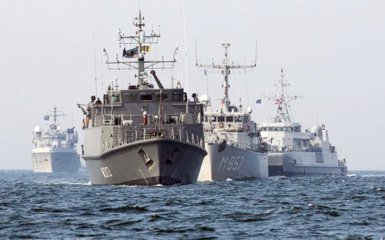According to British analysts, NATO has at least several ways to prevent the threat of Russia attacking other countries.
How NATO can resist the threat of Russian aggression
The publication notes that the naval power of NATO countries far exceeds Russia's, but this will not help in the event of an invasion of the Russian occupation army into the Baltic states or Poland.
However, according to experts, NATO can use naval forces for psychological pressure on Russia.
In particular, British analysts note that the naval power of NATO countries can be used to force the Kremlin to direct its own forces to the defense of huge coastlines, which will make plans for an attack impossible.
By forcing Russia to commit to ensuring its own defense in the maritime sphere, it will divert the most important Russian resources to tasks that the Alliance considers less threatening, analysts Siddharth Kaushal and Rene Balletta emphasize.
Analysts point out that unlike continental Russia, the US and Great Britain have used naval forces to establish control over new territories and ensure wars outside their own territory.
How NATO can use sea superiority against the Russian Federation
However, with 24,000 miles of coastline in Eurasia, Russia remains historically vulnerable at sea
Although the Russian fleet is one of the largest in the world, it exists mainly to protect the homeland, support the army and provide strategic firepower, for example, from nuclear missile submarines, the material emphasizes.
It is noted that a large number of cruise missiles have been fired over Ukraine from ships of the Black Sea Fleet since the beginning of the criminal war unleashed by the Kremlin.
However, the Russian Navy does not have among its key tasks the control of certain maritime territories.
The goal of Russian naval power is not naval combat as such, but ensuring safe and effective competition and participation of the Russian state in conflicts, the publication emphasizes.
In the Crimean War of 1854, Russia was defeated by a British and French landing force that captured Sevastopol. In 2024, NATO ships could launch long-range guided missiles into the heart of Russia.
Analysts note that there are currently several ways for NATO to instill fear in the Russian Federation.
In particular, Western countries are able to conduct large-scale exercises and transfer nuclear submarines to the borders of the Russian Federation.
Western allies can also invest in the production of UAVs, hypersonic missiles, and even upgrade ship-based anti-aircraft missiles, including the SM-2 and SM-6, as ground attack weapons.
As Russia rebuilds its military to make up for the massive losses it suffered in the Ukraine war, the Kremlin may feel compelled to focus resources on naval rather than land forces.
To the extent that NATO can expand the zone in which Russia must achieve sea denial to protect itself from long-range strikes, it can define the contours of Russian force regeneration. This can be achieved in two ways: by expanding the capabilities of long-range land strikes and by acting on new vectors that Russia has historically not had to defend, analysts explain.
At the same time, they note that it will be very difficult for Russia to strengthen its own naval forces.
Although Russia can achieve denial of the sea and some control over the sea in coastal seas, denial of freedom of action at a distance of 1,000 kilometers and beyond will be difficult and expensive for the country, which must also restore its forces on land, the publication notes.
Analysts also warn that the criminal Russian army has a large number of sea-based and land-based anti-ship missiles.
However, Russia does not have full-fledged capabilities in the field of maritime intelligence, surveillance and reconnaissance to identify distant naval targets and guide missiles at them.
The ships - especially those designed for operations on the high seas rather than in coastal areas - are also expensive to build and maintain at a time when the Russian military and aerospace forces are in desperate need of skilled personnel.
Russian shipyards are already overburdened, and new ships may need imported components that are blocked by Western sanctions.
At the same time, Western partners also experience limitations.
Some NATO members bordering Russia, such as Finland and Norway, may be nervous about making Russia nervous
The fact that Russia historically fears an attack from the West - but it has the world's largest nuclear arsenal. By fueling the Kremlin's fear of sea-launched cruise missiles, there is a risk of nuclear escalation.
However, this approach makes it possible to use NATO's maritime superiority. If the Kremlin had a choice, it would probably prefer to spend its resources on buying tanks for the war in Ukraine rather than warships to protect the Baltic. NATO can make this choice even more difficult.



